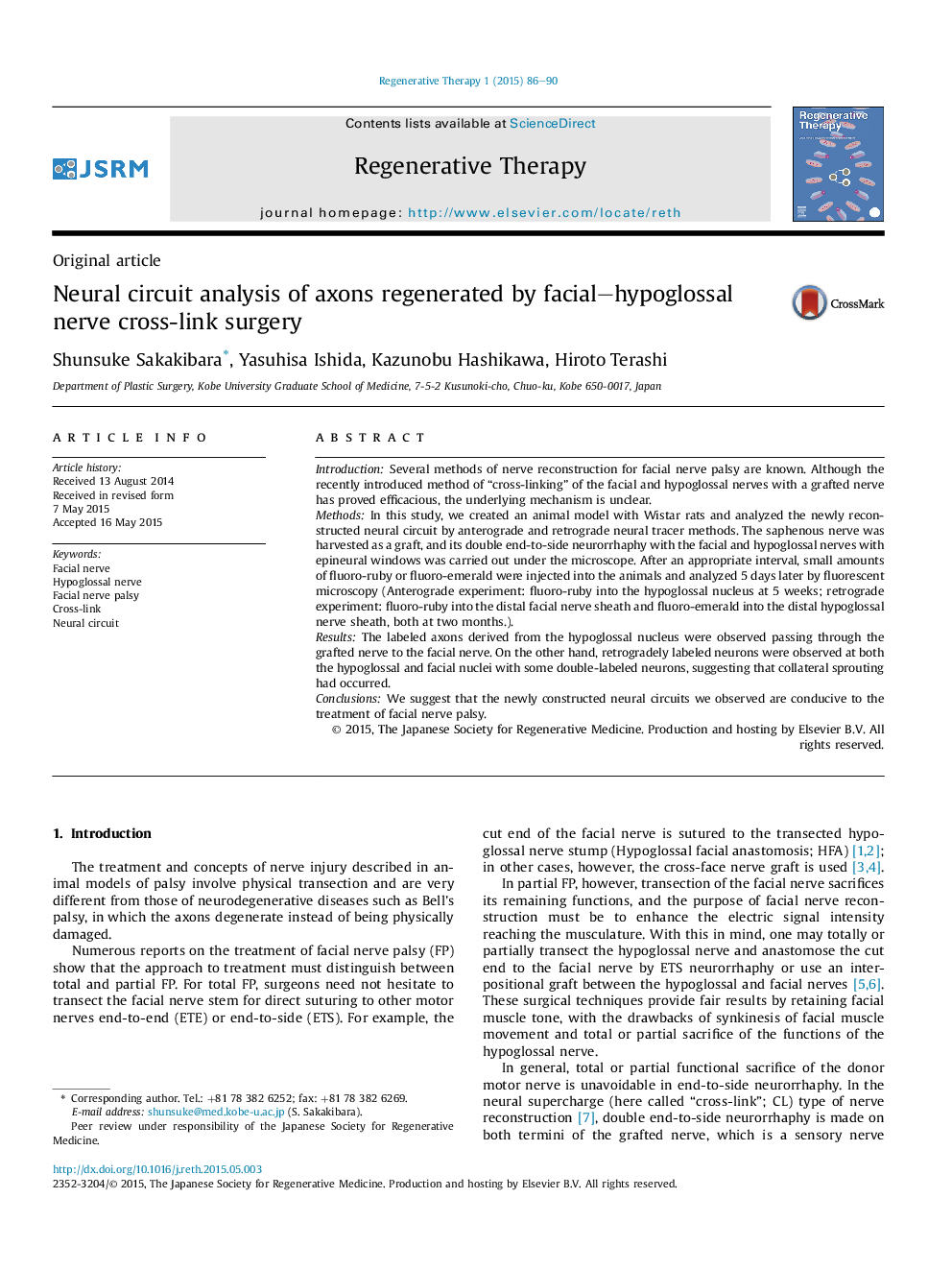| Article ID | Journal | Published Year | Pages | File Type |
|---|---|---|---|---|
| 2022341 | Regenerative Therapy | 2015 | 5 Pages |
•We studied the mechanism of nerve crosslinking for ameliorating facial nerve palsy.•In a rat model, retrograde tracers demonstrated the crosslink connections.•Axon collateralization into the crosslink was found.•This may be therapeutic by increasing nerve supply to the damaged side.
IntroductionSeveral methods of nerve reconstruction for facial nerve palsy are known. Although the recently introduced method of “cross-linking” of the facial and hypoglossal nerves with a grafted nerve has proved efficacious, the underlying mechanism is unclear.MethodsIn this study, we created an animal model with Wistar rats and analyzed the newly reconstructed neural circuit by anterograde and retrograde neural tracer methods. The saphenous nerve was harvested as a graft, and its double end-to-side neurorrhaphy with the facial and hypoglossal nerves with epineural windows was carried out under the microscope. After an appropriate interval, small amounts of fluoro-ruby or fluoro-emerald were injected into the animals and analyzed 5 days later by fluorescent microscopy (Anterograde experiment: fluoro-ruby into the hypoglossal nucleus at 5 weeks; retrograde experiment: fluoro-ruby into the distal facial nerve sheath and fluoro-emerald into the distal hypoglossal nerve sheath, both at two months.).ResultsThe labeled axons derived from the hypoglossal nucleus were observed passing through the grafted nerve to the facial nerve. On the other hand, retrogradely labeled neurons were observed at both the hypoglossal and facial nuclei with some double-labeled neurons, suggesting that collateral sprouting had occurred.ConclusionsWe suggest that the newly constructed neural circuits we observed are conducive to the treatment of facial nerve palsy.
